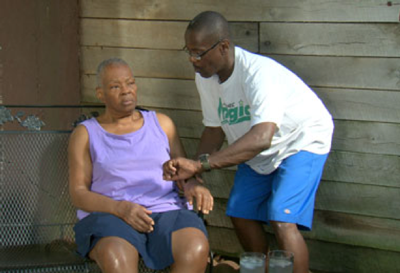There are abnormal conditions that affect a person’s heart rate. Know these conditions so that you can be alert for them when you take a person’s pulse.
- When a person is not getting enough oxygen to breathe, the heart rate rises. People with asthma and chronic lung disease such as bronchitis and emphysema normally have a faster heart rate.
- Persons who are having a heart attack or a disturbance in the rhythm of heartbeats, have a dysrhythmia [disrith´mē ə]. You will feel the pulse as weaker, irregular, and it may have a faster or slower rate than normal. When a new dysrhythmia develops, and the person is not in distress, call the doctor.
Some people have dysrhythmias that are chronic and you can feel all the time. Atrial flutter, atrial fibrillation, and mitral valve prolapse are examples of such conditions. In these cases, know what the person’s dysrhythmia feels like. If you note a change, call the doctor.
Remember: An abnormally slow, rapid, weaker, or irregular pulse means the heart has become a less effective pump and circulation of blood to the parts of the body will be affected.
If the person is in distress (such as having chest pain)
and you feel an irregular pulse call 911.
- Be Accurate. The most important safety tip for taking a pulse is being sure you have counted the right pulse rate. If you feel unsure or count a pulse that is too slow, too fast, irregular and hard to count, take the pulse a second time.
- Try to take the resting pulse rate at the same time each day. If the pulse is very different (too slow, too fast, very irregular) from the person’s normal pulse, call the doctor.
The most important safety tip for taking a pulse is being sure you have counted the right pulse rate.
related content:
Step-by-Step Instructions
Open File
- Wristwatch or wall clock with second hand or digital second count
